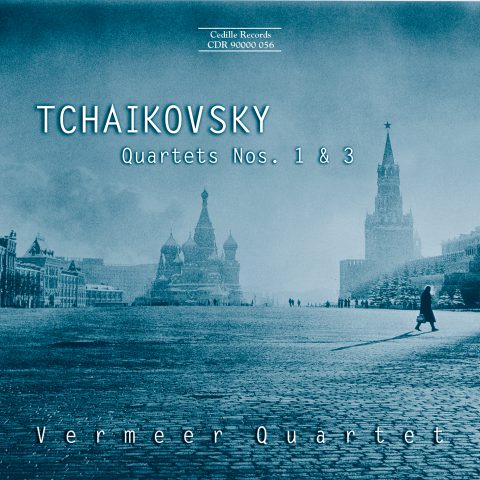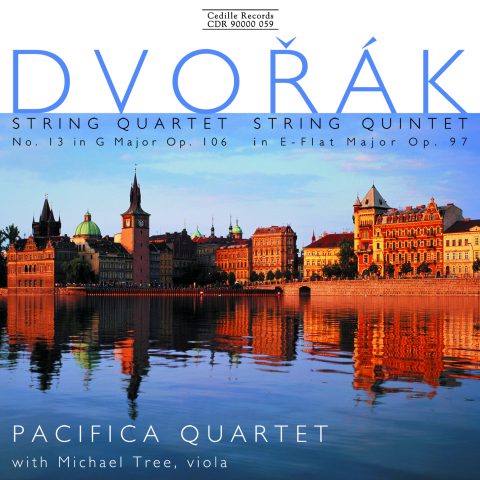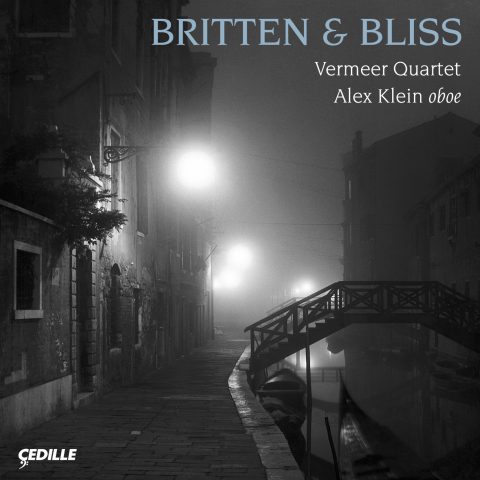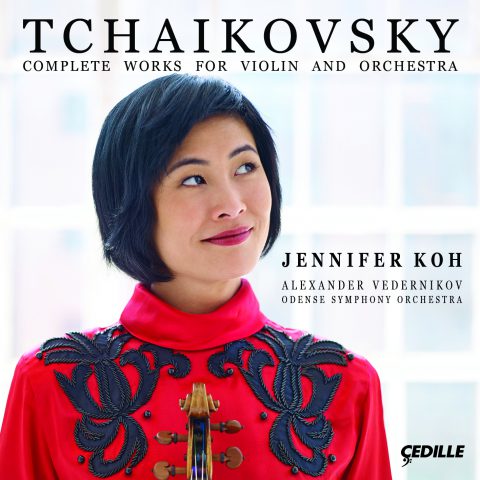| Subtotal | $18.00 |
|---|---|
| Tax | $1.85 |
| Total | $19.85 |
Store
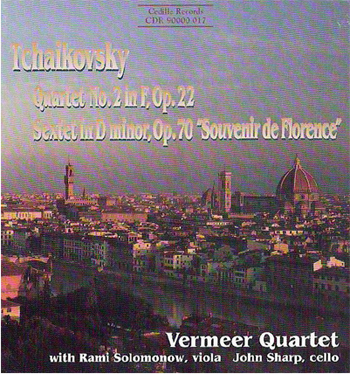
Store
Tchaikovsky: Quartet Op. 22 – Sextet ‘Souvenir de Florence’
The internationally celebrated Vermeer Quartet, known for its extensive, major-label recordings of standard repertoire, has turned to its hometown record label, Chicago’s Cedille Records, for a program of important yet surprisingly neglected Tchaikovsky works.
The disc offers Tchaikovsky’s profoundly moving Quartet No. 2, available on CD for the first time outside a multi-disc set, and the eloquent Souvenir de Florence, performed in its less-often recorded — but more intimate and effective — original version for string sextet.
The Vermeer’s members are Shmuel Ashkenasi, violin; Mathias Tacke, violin; Richard Young, viola and Marc Johnson, cello. For the sextet, they’re joined by Rami Solomonow, principal violist of the Chicago Lyric Opera Orchestra, and John Sharp, principal cellist of the Chicago Symphony Orchestra.
The quartet, formed in 1969 at the Marlboro Festival, has since performed at virtually all the world’s most prestigious festival and in every major city in North America and Europe. The Vermeer is “acclaimed for solid performances of repertory of all period,” notes the New Grove Dictionary of American Music.
Preview Excerpts
PIOTR ILYICH TCHAIKOVSKY (1840-1893)
String Quartet No. 2 in F major, Op. 22
String Sextet in D minor, Op. 70 "Souvenir de Florence"
Artists
Program Notes
Download Album BookletTchaikovsky: String Quartet No. 2 and "Souvenir de Florence" for String Sextet
Notes by Huw Edwards
Although Tchaikovsky’s orchestral works are much performed and recorded, his chamber and solo piano music remain comparatively obscure. Tchaikovsky’s three string quartets are all relatively early works stemming from a transitional period in his turbulent life. The Second Quartet, composed between December 1873 and January 1874, has become the Cinderella of the three. A month after its completion, the quartet was performed privately at the apartment of pianist and pedagogue Nicolai Rubinstein. The work was well received by all present except for the host’s brother, composer and pianist Anton Rubinstein. As Tchaikovsky’s friend Nicolai Kashkin reported: “All the while the music continued, Anton Grigoryevich listened with a dark, dissatisfied air, and soon as it was over, said with his usual ruthless candor, that this was not at all in the chamber style, and that he did not understand the composition at all. All the other listeners were, on the contrary, in ecstasy.” The Second Quartet’s public premiere the following month at the Imperial Music Society was an unqualified success, with even the usually critical composer César Cui hailing the work as Tchaikovsky’s “most distinctive and original to date.”
There is little sunshine to be found in the Quartet’s first movement despite its F major tonality. The work’s Adagio introduction is in the form of a fantasia full of chromaticism and tonal obfuscation undoubtedly inspired by the mysterious opening bars of Mozart’s “Dissonance” Quartet in C major, K. 465. Tchaikovsky’s introduction is tempestuous and doleful — a kind of musical groping that could represent the composer’s growing dissatisfaction with his own personal life. A genial and folk-like Moderato assai follows. The first theme presents passages of contrary motion between the viola and first violin. The second theme is syncopated over its accompaniment of staccato sixteenth notes, which gradually become more prominent than the theme itself. The music grows in density throughout the development and builds to a frenzied climax of awesome power. The pressure then abates and gives way to the tranquil coda that concludes this almost neoclassical movement.
The second movement, a nimble, dance-like Scherzo in D-flat major, presents the Tchaikovsky we know so well as a master of ballet and theater music. Phrases constructed from irregular meters — two bars of 6/8 plus one of 9/8 — have the feel of seven beats (twenty-one beats over three bars). These seven-beat phrases give this movement a resemblance to the “waltz-with-a-limp” movement from the popular “Pathétique” Symphony, which is constructed from units of five beats. The Trio section, in A major, has a melodic shape similar to the Scherzo’s, but its more sentimental character provides contrast with the fleet-footed Scherzo, which is repeated along with a teasing coda.
The jewel of this Quartet, the Andante ma non tanto third movement is one of Tchaikovsky’s sweetest lyrical inspirations. It is based on the repeated interval of a descending fourth (a musical motto Mahler employed in almost every work he wrote). There is a deep sense of nostalgic recollection here, as though Tchaikovsky were mulling over some childhood memory. The middle section, marked Pochissimo più mosso, pushes players to the limits of depth and discipline of ensemble. The opening returns, upholstered by plush harmonies as the movement builds to a heartrending climax. After a wistful echo of the middle section, the movement ends with poignant pianississimo (ppp) quotations of the falling figures heard at the beginning.
The finale is mock fugal, with a short, martial snare drum figure forming its basis. Tchaikovsky biographer Edward Evans sees this movement as “abound[ing] in evidence of Tchaikovsky’s contrapuntal facility . . . the simple themes are literally juggled with, with a fascinating dexterity, and the vivacity with which the interest becomes more excited is irresistible.” Well into the movement, the second violin begins a fugue proper in which the movement’s initial motive is expanded to provide a self-sufficient counter-subject. Always one to generate a good head of steam, Tchaikovsky ends the Quartet with a final flourish and a dash to the finish line. Florence was one of Tchaikovsky’s favorite vacation spots.
For many of his pleasant Florentine sojourns, Tchaikovsky stayed at a small villa owned by Nadezhda von Meck, his generous benefactress and confidante whom Tchaikovsky, as a condition of their unusual relationship, was never to meet. Tchaikovsky used his peaceful escapes to Florence to sketch, orchestrate, or just relax away from music.
Tchaikovsky’s last visit to Florence came early in 1890. He was then primarily occupied with the completion of his opera Pique Dame (The Queen of Spades). In Paris later that year, Tchaikovsky had the idea for and began to sketch a work inspired by his beloved Florence. Tchaikovsky’s conception took the fairly uncommon shape of a string sextet, which he completed in Russia that summer. The Sextet has come to be known by its artful subtitle, Souvenir de Florence (reminiscence of Florence). A private performance of Souvenir was given in December 1890, but Tchaikovsky was unsatisfied and withdrew the piece for a bout of revisions and structural alterations.
A trip to America for the opening of Carnegie Hall slowed the revising process, so Souvenir did not attain its final form until December 1891. A contented Tchaikovsky then wrote to his brother Modest, “What a Sextet — and what a fugue at the end — it’s a pleasure! It is awful how pleased I am with myself; I am embarrassed not by any lack of ideas, but by the novelty of the form.” Souvenir received its public premiere on December 6, 1892 at a concert presented by the St. Petersburg Chamber Music Society, to which Tchaikovsky dedicated the piece.
The opening Allegro con spirito bursts forth full of D minor fervor, the minor-ninth in the first bar delivering a strange and unceremonious kick to the first theme. The texture is robust with highly active musical lines generating a passionate momentum. The serenade-like second theme is appropriately Italianate. The first theme’s restless energy returns in the fugal development while the second theme reveals more cantabile richness in the recapitulation as it is surrounded by new imitations and a myriad of telling details. The coda employs cross-rhythms reminiscent of Dvorak as it builds to heady levels of excitement.
The Andante cantabile, D major second movement begins with an opulent, chordal introduction. The melancholy theme that follows has the character of a guitar accompanied lament. The chords return before the movement’s curious Moderato central section in which the players are instructed to play a punto d’arco (with the point of the bow), an effect that adds a frosty glazing to the music’s countenance. English music critic, Colin Mason describes this passage as “an essay in sheer sound effect, without the least musical content whatever, which is probably unique in the whole realm of [pre-twentieth century] chamber music.” After this unusual episode, the opening theme returns with garlanding embellishments; the cello’s lavish outpourings of bel canto beauty serve to remind us that this work was inspired by the homeland of Giuseppe Verdi.
The third movement, a swaying and energetic Scherzo in A minor, sounds more Russian than Italian. The violas playing in unison open the brilliant Trio section filled with fanfare-like exclamations and irradiating accompaniment. The Allegro vivace finale is in an abridged sonata form. It starts in D minor, but the theme’s pentatonic overtones are redolent of Gypsy music. As with the Scherzo, a Slavonic tang flavors the Finale’s soaring second theme. The first theme returns to form the basis of the “fugue at the end” about which Tchaikovsky justifiably boasted to his brother. The frenetic, headlong rush that concludes this Tchaikovsky opus has an especially airy feeling of melodic freedom, making the Souvenir de Florence’s ending a genuine al fresco delight.
— Huw Edwards
Album Details
Total Time: 73:44
Recorded: May & October, 1993 at the Great Hall, First United Methodist Church, Evanston, Illinois
Producer: James Ginsburg
Engineer: Bill Maylone
Design: Cheryl A Boncuore
Notes: Huw Edwards
© 1994 Cedille Records/Cedille Chicago
CDR 90000 017
